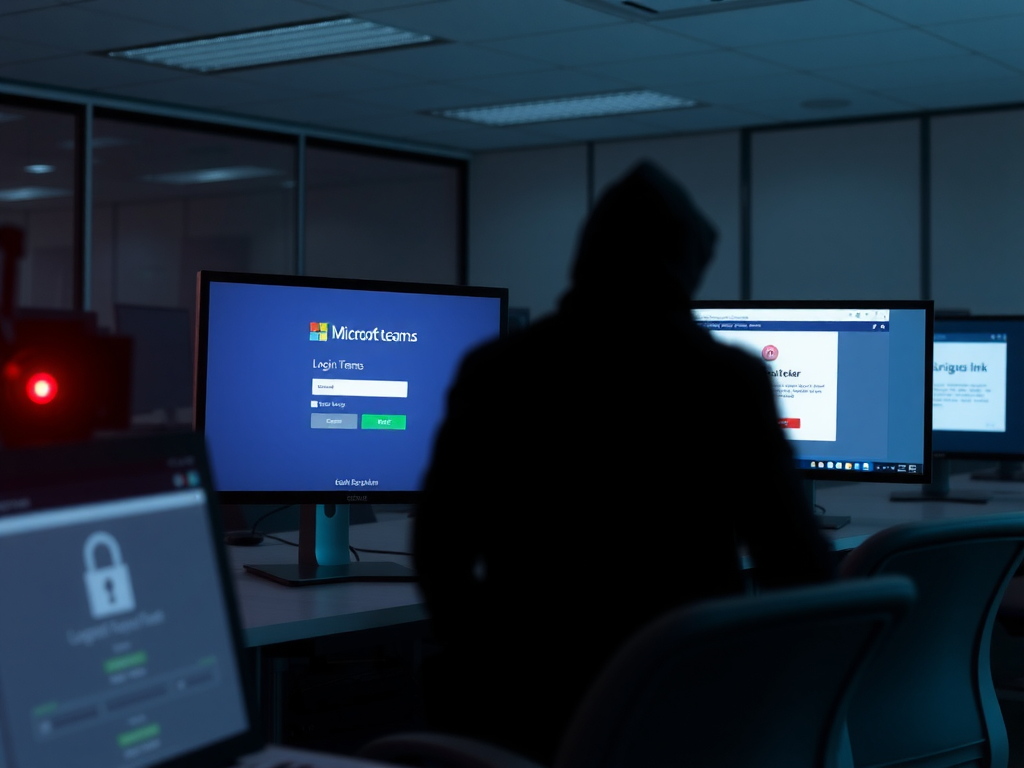Threat Report
From ClickFix to Command: A Full PowerShell Attack Chain A targeted intrusion campaign impacting Israeli organizations has been identified, leveraging compromised internal email infrastructure to distribute phishing messages.
Threat Overview
The threat report published by AlienVault on 2025-08-11T15:29:28.504Z details a sophisticated attack campaign targeting Israeli organizations. This campaign employs a multi-stage, PowerShell-based infection chain that ultimately delivers a remote access trojan (RAT). The attack begins with phishing emails, progresses through a spoofed Microsoft Teams page, and uses social engineering to execute malicious PowerShell commands. The payload retrieves additional data, deploys the RAT, and establishes communication with a command and control server.
Key characteristics of this campaign include:
- A full PowerShell-based delivery chain
- Obfuscated payloads
- Evidence of lateral movement within the network
- Potential overlap with MuddyWater campaigns
The campaign demonstrates the effectiveness of living-off-the-land techniques, layered evasion, and adaptive command-and-control (C2) communication.
Detailed Analysis
This targeted intrusion campaign is particularly concerning due to its use of compromised internal email infrastructure. By leveraging trusted communication channels, attackers can bypass traditional security measures and increase the likelihood of successful phishing attempts.
The attack chain starts with a phishing email that directs users to a spoofed Microsoft Teams page. This social engineering tactic exploits the trust users have in familiar platforms, making them more likely to comply with the malicious instructions. Once on the spoofed page, users are prompted to execute PowerShell commands, which initiate the infection process.
The PowerShell-based delivery chain is designed to evade detection by security tools. The payloads are obfuscated, making it difficult for analysts to identify and analyze the malware. Additionally, the use of living-off-the-land techniques allows the attackers to leverage legitimate system tools and processes, further complicating detection efforts.
Once the initial infection is established, the malware retrieves additional data from a remote server. This data includes the final payload, which is a remote access trojan (RAT). The RAT provides the attackers with persistent access to the compromised system, allowing them to exfiltrate data, deploy additional malware, and move laterally within the network.
The campaign’s use of adaptive C2 communication adds another layer of complexity. By dynamically adjusting their communication methods, attackers can evade detection by security tools that rely on static indicators of compromise (IOCs). This adaptability makes it challenging for organizations to defend against the threat.
Operational Security Measures
The campaign’s use of living-off-the-land techniques and adaptive C2 communication highlights the importance of robust operational security measures. Organizations must implement comprehensive monitoring and detection capabilities to identify and respond to these sophisticated threats.
While the malware employs various evasion tactics, its reliance on PowerShell and legitimate system tools can be a double-edged sword. By closely monitoring PowerShell activity and analyzing system logs, organizations can detect anomalous behavior that may indicate an ongoing attack.
Recommendations for Mitigation
To mitigate the threat posed by this campaign, organizations should consider the following recommendations:
- Email Security: Implement advanced email security solutions to detect and block phishing attempts. This includes using machine learning algorithms to identify suspicious emails and educating employees on how to recognize and report potential phishing attacks.
- Network Segmentation: Segment the network to limit lateral movement. By dividing the network into smaller segments and implementing strict access controls, organizations can contain the spread of malware and reduce the impact of a successful attack.
- Endpoint Protection: Deploy endpoint protection solutions that can detect and block malicious PowerShell scripts. These solutions should include behavioral analysis capabilities to identify and respond to suspicious activity in real-time.
- Regular Updates: Keep all systems and software up to date with the latest security patches. Regular updates help address known vulnerabilities that can be exploited by attackers.
- Security Awareness Training: Provide regular security awareness training to employees. This should include phishing simulations, training on recognizing suspicious emails, and best practices for password security.
- Intrusion Detection Systems (IDS): Deploy IDS to monitor network traffic for signs of malicious activity. IDS can help detect and alert on suspicious traffic patterns, allowing organizations to respond quickly to potential threats.
- Incident Response Plan: Develop and maintain an incident response plan. This plan should include steps for containing the threat, investigating the incident, and restoring affected systems.
By implementing these measures, organizations can significantly reduce the risk of falling victim to this sophisticated attack campaign.
External References
For additional information, please refer to the following external references:


